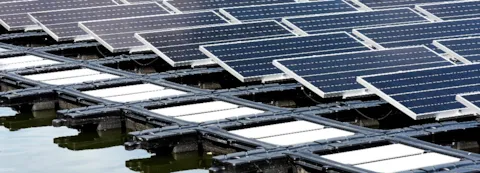Small scale solar + storage strategies can stretch beyond the utility bill to provide grid services and enhance value to customers
DNV’s ‘Strategies for Success in Small Scale Solar + Storage’ report provides new approaches to increase solar + storage project margins, reduce costs and support market growth. Behind the meter solar + storage systems had uneven success across the U.S., but is a valuable tool for addressing sustainability and resilience. Innovative, cross-sector approaches are necessary to deepen penetration for all customer segments.
OAKLAND, Calif, MAY 26, 2020 – Behind the Meter (BTM) Solar + Storage systems can be advantageous to many types of customers, from individual homeowners to Fortune 500 companies with large portfolios and footprints, but energy providers have not accessed the full value that these distributed resources can provide customers and the grid, a new report from DNV GL finds.
To increase the penetration of BTM solar + storage in areas that have lower uptake, and to make the most of the market in areas where it is more common, developers, load-serving entities, investors, distributed energy resources (DER) and other energy service providers must adopt innovative solutions that go beyond the direct economic benefit of lower utility bills and emphasize its difficult to quantify benefits that include resilience, carbon emission reductions, and system peak load reduction.
The report, Strategies for Success in Small Scale Solar + Storage, provides 12 innovative approaches that energy providers can use to increase solar + storage project margins, reduce costs and support market growth. These strategies, based on market and business fundamentals, reveal untapped opportunities in the market by highlighting synergies between multiple sector stakeholders across the wholesale and retail markets. Strategies include:
- Wholesale market integration: Allow solar and storage customers to share in the value of wholesale capacity, energy, and ancillary services markets
- Pricing Structures: Develop products and pricing designs to reflect the value distributed energy resources can provide
- Customer data: Leverage data to improve customer targeting, quantify real-time greenhouse gas emissions
- Partnerships: Engage in partnerships with adjacent industries and lenders to simplify customer offers
- Digital green neighborhoods: Connect customers with one another to share virtual green power through peer-to-peer trading, community solar, and community storage.
“Tried and true sales and outreach methods have worked well in areas where BTM solar + storage is enabled and economically advantageous, but innovative strategies are needed to deepen penetration to residential and commercial and industrial (C&I) customers more widely across the U.S.,” said Richard S. Barnes, region president for Energy North America at DNV GL. “Storage + solar can provide customers of all sizes with benefits that go beyond costs savings by lowering carbon emissions and providing resilience against power outages, and DNV GL’s unique insight into innovative strategies and solutions can help to squeeze more value out of DERs and provide energy stakeholders a launch pad to expand their market share.”
Market drivers for BTM solar + storage
All customer segments—residential and C&I—share the same driver when it comes to installing behind the meter solar + storage: economics. These projects can significantly lower utility bills while providing customers with clean, local, and reliable energy. Growth has been most prevalent in markets where there is the clearest economic case, such as Hawaii, California, Arizona, New Jersey and Massachusetts.
Storage + solar also offers important additional value to customers that goes beyond utility bill savings. The growing chorus of C&I customers with strong and centralized sustainability and renewable energy programs, are highly motivated by solar + storage’s contribution toward achieving renewable energy or greenhouse gas emissions pledges. For residential customers, the value of solar + storage is enhanced by the desire to eliminate the risk of being without power for an extended period, especially in areas that are subject to storms or wildfire.
Distributed solar and storage is an important part of the energy transition, as well as a popular option for customers to lower utility bills, reduce carbon emissions, and provide resilience during power outages, but it is unevenly applied across the U.S. While the distribution and market interest vary, there are opportunities for energy stakeholders of all types to leverage the additional value solar and storage can provide while growing the market, reaping the benefits for themselves and their customers.
DNV GL’s first of its kind report describes the regulatory landscape, key players, business models, financing approaches, and economics that underpin the foundation of a solar market that eclipsed 2 million rooftops with storage attachment rates for new solar customers approaching 40%.
About DNV GL
DNV GL is a global quality assurance and risk management company. Driven by its purpose of safeguarding life, property and the environment, the company enables customers to advance the safety and sustainability of their business. DNV GL provides classification, technical assurance, software and independent expert advisory services to the maritime, oil & gas, power and renewables industries. The company also provides certification, supply chain and data management services to customers across a wide range of industries. Operating in more than 100 countries, DNV GL experts are dedicated to helping customers make the world safer, smarter and greener.
DNV GL delivers world-renowned testing, certification and advisory services to the energy value chain including renewables and energy management. The company’s expertise spans onshore and offshore wind power, solar, conventional generation, transmission and distribution, smart grids, and sustainable energy use, as well as energy markets and regulations. Its experts support customers around the globe in delivering a safe, reliable, efficient, and sustainable energy supply.
Learn more at www.dnvgl.com/power-renewables.
